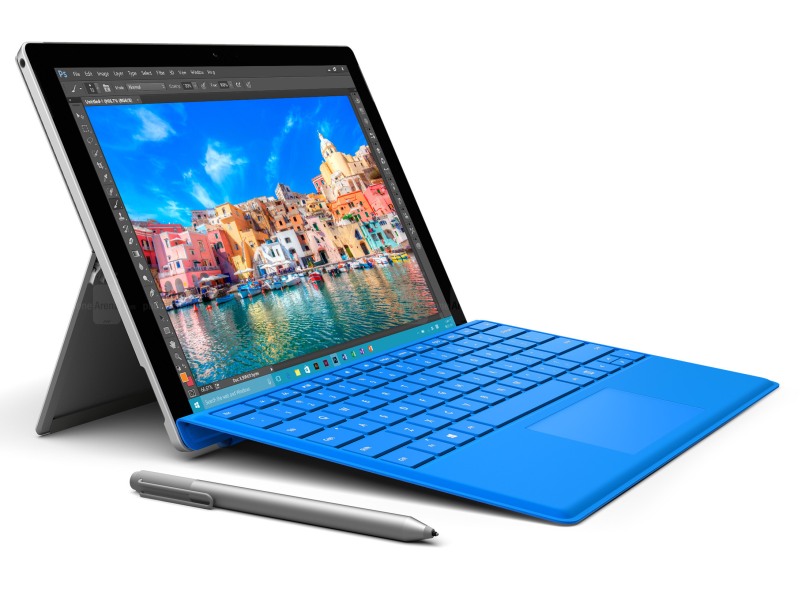- Home
- Laptops
- Laptops Opinion
- Hybrids Could Save Both the PC and Tablet
Hybrids Could Save Both the PC and Tablet

When tablets launched, people said they would kill off the PC. That of course, did not happen, and today it looks like the tables have, kind of, turned. The demand for desktop PCs continues to decline, as more and more functions move to our smartphones. But tablets also appear to have reached a saturation point where yearly refreshes don't offer enough of an incentive to ditch the old one, as is evident from IDC's Q3 report.
Now, both tablet makers and PC makers are turning to each other, as a Hail Mary. The convertible or 2-in-1 is something that PC makers have been betting on, and now, with devices like the iPad Pro and the Microsoft Surface Pro, tablets are headed in the same direction.
(Also see: Beyond Ultrabooks - Looking for the Next Big Form Factor in Computing)
As our phones become better, we don't actually need other devices for most tasks. There are still some things that are best done on a laptop, such as high-end gaming, or graphics design work, and there are some areas such as casual gaming, reading, or watching movies where tablets excel. The idea behind hybrid PCs was to be the best of both worlds.
These were all the rage a few years back when Intel introduced this new segment to fill the gap between regular laptops and the premium Ultrabooks. They never really went mainstream because of high prices, but the segment is projected to account for nearly 26 percent of the total mobile PCs by 2019.
Tablets are approaching the same issue from the other side with a new wave of tablet-hybrids. The iPad Pro Review and Microsoft's latest Surface Pro 4 show how tablets can become more useful than before.
This is not a new concept per se, as you could always add a keyboard to your tablets. But that's not the only change. The Surface Pro, for example, comes with a 'tablet mode' button to make the interface more touch friendly, and Windows 10 allows you to run tablet apps and legacy programs side by side with ease. The iPad Pro also includes tweaks to iOS to make it more suited to multitasking, and makes it much more useful. These changes make tablets effective for more than just consuming media.
The Windows tablets are now much better as tablets than before, while remaining useful as PCs. Apple's offering still offers the best tablet experience, but it's actually quite capable with a keyboard too.
At CES 2016, we witnessed major PC vendors refresh their hybrid devices while others introduced new hybrid tablets to take on Microsoft's Surface. Dell unveiled the Latitude 12 7000 Series that sports USB Type-C and is powered by Intel's Core M SoC. Toshiba announced the DynaPad tablet which can work as a Windows 10 laptop with a keyboard dock. Samsung also launched the Galaxy TabPro S, which is the first Galaxy device to run Windows 10.
These devices come closer to really offering the best of both worlds, but high pricing is going to be an issue still. For example, in India the Surface Pro 4 is on sale at a starting price of Rs. 89,990, which isn't exactly affordable for most. And remember that this is the base model, with limited storage and RAM.
Another thing that will annoy a lot of people is the lack of SD card readers, LAN ports, and other hardware you've come to take for granted. Workarounds exist, but most require you to spend yet more money for optional accessories.
Hybrid tablets are still at a very nascent stage and have a long way to go. But maybe it's just the shift the tablet and PC industry needs to make it a 'must-have' gadget once again, as smartphones continue to defy size and form.
The age old 'PC vs tablet' war will soon be moot as both worlds seem to be merging into a singular entity. Yesterday, it was a laptop trying to be a tablet and today, it's the other way around. Perhaps, a fusion of these two computing spaces is just what's needed to revive both tablet and PC industries in one go.
Get your daily dose of tech news, reviews, and insights, in under 80 characters on Gadgets 360 Turbo. Connect with fellow tech lovers on our Forum. Follow us on X, Facebook, WhatsApp, Threads and Google News for instant updates. Catch all the action on our YouTube channel.
- Samsung Galaxy Unpacked 2025
- ChatGPT
- Redmi Note 14 Pro+
- iPhone 16
- Apple Vision Pro
- Oneplus 12
- OnePlus Nord CE 3 Lite 5G
- iPhone 13
- Xiaomi 14 Pro
- Oppo Find N3
- Tecno Spark Go (2023)
- Realme V30
- Best Phones Under 25000
- Samsung Galaxy S24 Series
- Cryptocurrency
- iQoo 12
- Samsung Galaxy S24 Ultra
- Giottus
- Samsung Galaxy Z Flip 5
- Apple 'Scary Fast'
- Housefull 5
- GoPro Hero 12 Black Review
- Invincible Season 2
- JioGlass
- HD Ready TV
- Laptop Under 50000
- Smartwatch Under 10000
- Latest Mobile Phones
- Compare Phones
- Redmi Note 15 5G
- Redmi Note 15 Pro 5G
- Redmi Note 15 Pro+ 5G
- Lava Play Max
- Poco C85 5G
- Honor Magic 8 Lite
- Jolla Phone
- Realme P4x 5G
- Asus ProArt P16
- MacBook Pro 14-inch (M5, 2025)
- OnePlus Pad Go 2
- Poco Pad M1
- Just Corseca Skywatch Pro
- Honor Watch X5
- Acerpure Nitro Z Series 100-inch QLED TV
- Samsung 43 Inch LED Ultra HD (4K) Smart TV (UA43UE81AFULXL)
- Asus ROG Ally
- Nintendo Switch Lite
- Haier 1.6 Ton 5 Star Inverter Split AC (HSU19G-MZAID5BN-INV)
- Haier 1.6 Ton 5 Star Inverter Split AC (HSU19G-MZAIM5BN-INV)












